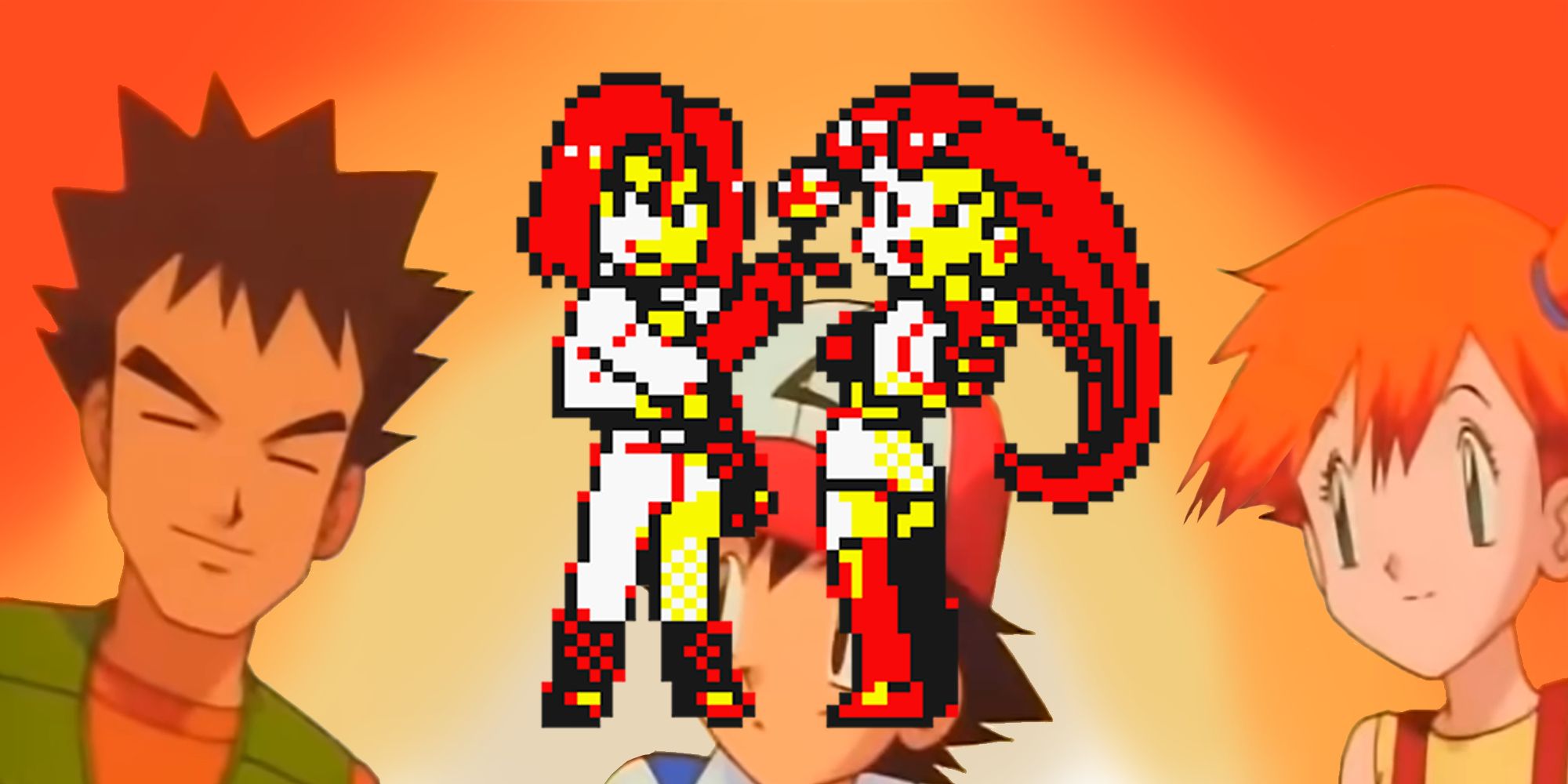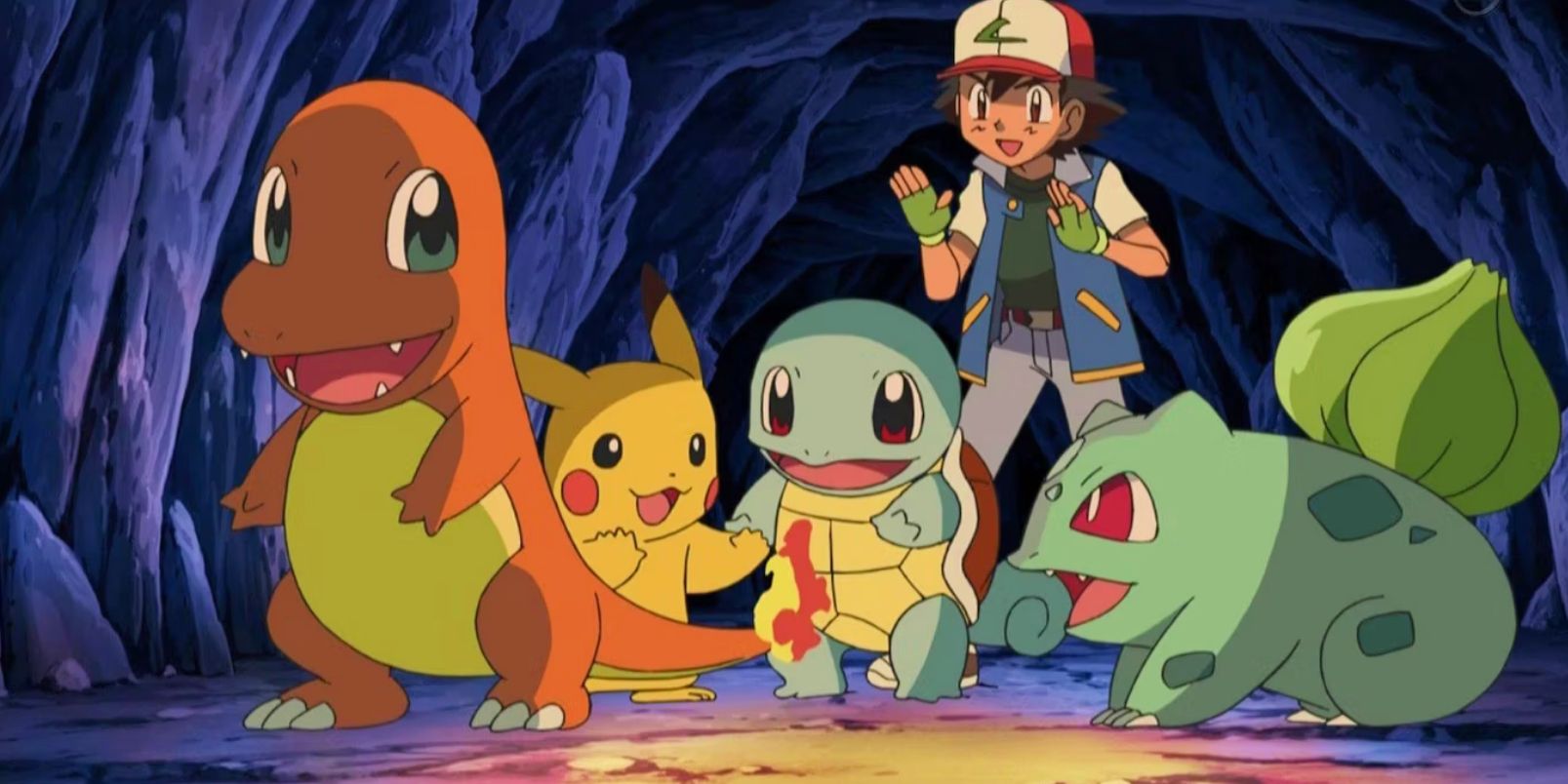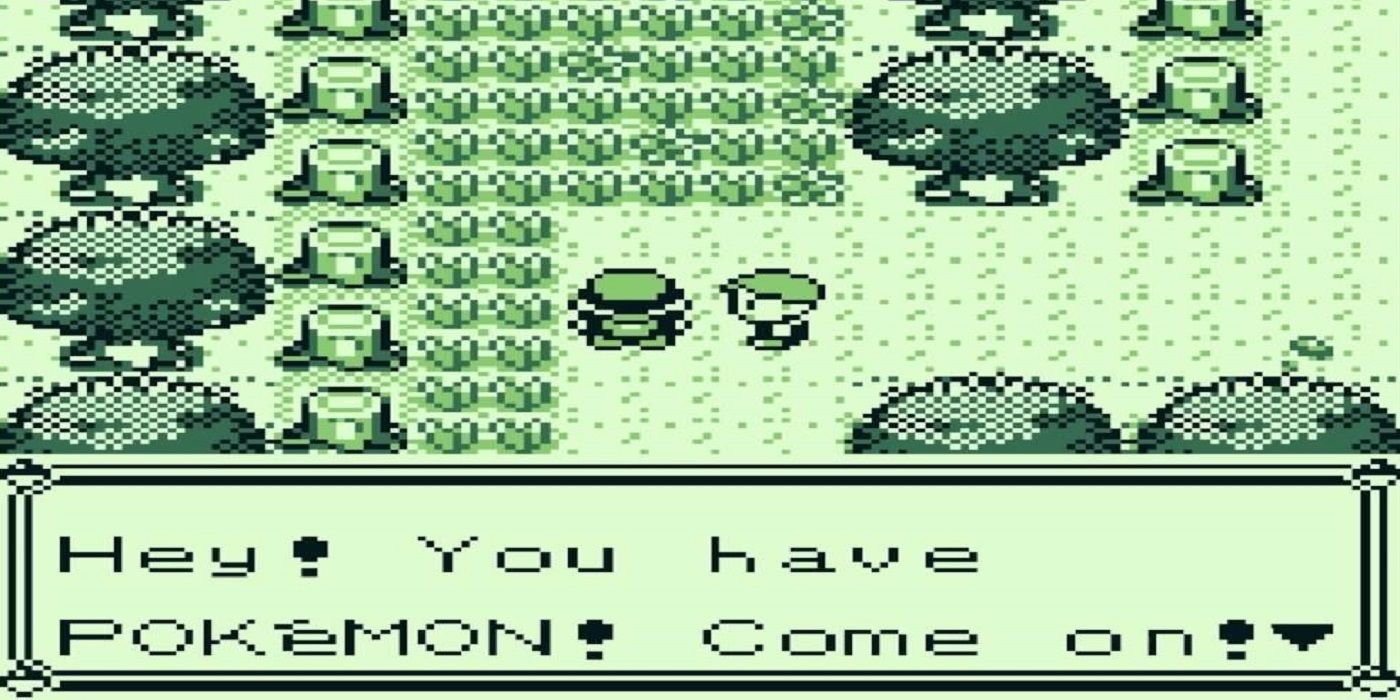Pokémon Yellow makes multiple tweaks to Pokémon Red and Blue that reference the Pokémon anime, including ones with regards to characters. Pokémon Yellow released in 1998 after the game series and the anime both launched to popularity. Some of the choices it makes to tie these two different formats of Pokémon together are apparent at a glance. Yellow's most obvious anime tie-in feature is that it provides the player with a Pikachu starter that walks with them outside of its Poké Ball, for instance. It also contains subtler anime nods, however, and even as a subcategory of references, Pokémon Yellow Version's character shouts range from the overt and simple to those that even avid anime fans may not immediately spot.
Some of Yellow's subtler referential alterations to characters are purely cosmetic and don't alter who those characters are. The sprite art for Pokémon Yellow is changed from Red and Blue's, and while the updated art often enhances characters' resemblance to their anime counterparts - such as by increasing the spikiness of the rival's hair or by dressing Brock in a brightly-colored vest - it rarely does more than that.
But Pokémon Yellow also wholly adds and replaces multiple generic NPCs with characters familiar to anime viewers. For instance, the player fights unnamed Team Rocket grunts in all their encounters with the crime ring in Pokémon Red and Blue. But Yellow replaces most of these grunts with Jessie and James, the anime's reoccurring comedic antagonists. They fight the player's team not only with Meowth but with the Ekans and Koffing that serve as their partner Pokémon early in the show. Nurses at the Pokémon Centers seen in Red and Blue have simple outfits and long straight hair. Yellow replaces them with nurses wearing the iconic hat and hooped hairstyle that marks them as the anime's Pokémon Center Nurse Joys. Likewise, the player will encounter police officers with the flared hairstyle of Officer Jenny on Yellow's overworld, one of whom will give them a Squirtle.
This Squirtle is one of several nonhuman anime characters to receive counterparts in Yellow, along with the player's Pikachu and the Team Rocket duo's partners. Officer Jenny tells the player that she's caught the Squirtle for causing mischief before she hands it off to them, and anime protagonist Ash's Squirtle leads a gang of mischief-making fellows of its species before joining his team. Chansey accompany Nurse Joys at Pokémon Centers. Team Rocket boss Giovanni has a Pokémon team in Yellow that includes the Persian that he keeps as a companion in the show. Gym Leader Erika fights using a Victreebel and a Vileplume in Red and Blue, but Yellow replaces those Pokémon with their pre-evolutions to match the Weepinbell and Gloom that Ash battles in the anime. Koga fights with Venonat and Venomoth like his show counterpart instead of with his Red and Blue team of Koffing, Weezing, and Muk. Sabrina trades out both her Mr. Mime and Venomoth for the Abra on her show team, while Blaine joins his show counterpart in using a Ninetales.
Pokémon Yellow Version Includes Sneakier Anime Cameos
The Charmander and Bulbasaur that the player can receive are notable not only for representing the Charmander and Bulbasaur on Ash Ketchum's Pokémon team but for the NPCs associated with them. The player gets Charmander from a character who claims he's been considering releasing the Fire-type for being poorly trained. This implies that he's Damian, who owned Ash's Charmander before he abandoned it due to perceiving it as weak. Meanwhile, a character who claims to nurse injured Pokémon back to health gives the player Bulbasaur, and Ash receives his Bulbasaur from a girl named Melanie with the same occupation.
The last few anime characters to appear in Pokémon Yellow do so similarly to Damian and Melanie: not by name, but by implication via the Pokémon associated with them and how the player encounters them. On Yellow's version of Route 6, the player can battle a male Jr. Trainer and a female Jr. Trainer who fight using a Weepinbell and a Cubone respectively. These pocket monster trainers represent Pokémon anime characters named Joe and Giselle, a Weepinbell owner and a Cubone owner Ash and his friends meet during a brief visit to a Pokémon trainers' school. Meanwhile, a Youngster on Yellow's Route 9 who uses a Sandshrew represents A.J., a young unofficial Gym Leader. Ash and company encounter Joe and Giselle's school and A.J.'s Gym between Cerulean and Vermilion City, and Routes 6 and 9 each connect to one of those towns.
Some Pokémon Yellow NPCs Are Unclear In Who They Are
Curiously, Pokémon Yellow also introduces a couple of NPCs who don't seem to reference the anime in any specific way. In Pokémon Red and Blue, the player can battle three Bug Catcher trainers in Viridian Forest. The Bug Catchers are still present in Yellow, but they're joined by a fourth along with a member of the Lass trainer class. Ash and Misty only run into one other trainer while visiting the forest in the Pokémon anime's first season besides Team Rocket and themselves. That trainer is a Pinsir and Metapod trainer who calls himself Samurai. Two of Yellow's Bug Catchers use Metapod, but none of the four use a Pinsir, so none stand out as potential references to Samurai. That said, Viridian Forest is the site of multiple notable events in the anime, such as Ash's acquisition of his Pidgeotto and Butterfree. The intent behind the added encounters may not go any deeper than making the forest a more eventful location in Yellow to reflect its show status.
While Pokémon Yellow sold and reviewed well after its release, it didn't do so entirely without controversy. Some found the game different enough from Pokémon Red and Blue to make it a worthwhile experience, even for someone who'd already played either of those games. Others disagreed, feeling that the game's existence seemed cash-grabby - a criticism that Nintendo continues to face for releasing multiple versions of each new mainline Pokémon game. Others recommended it simply as an alternative to Red and Blue rather than as something to play as a supplement to either. Wherever they may have ultimately fallen, however, it's likely that many Pokémon fans who kept up with the early days of the anime enjoyed seeing what cameos and references they could spot in Yellow.



